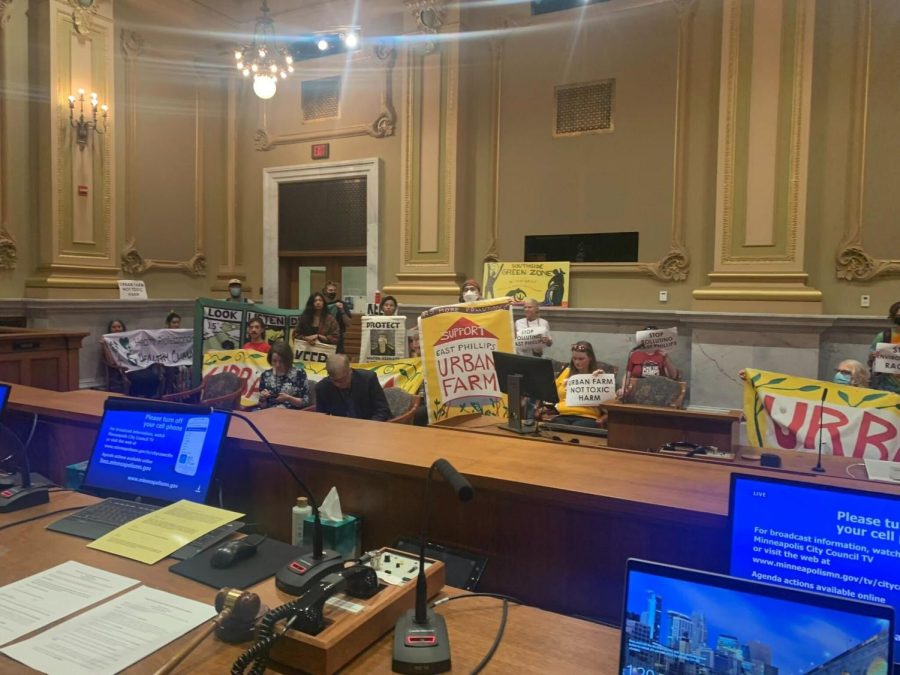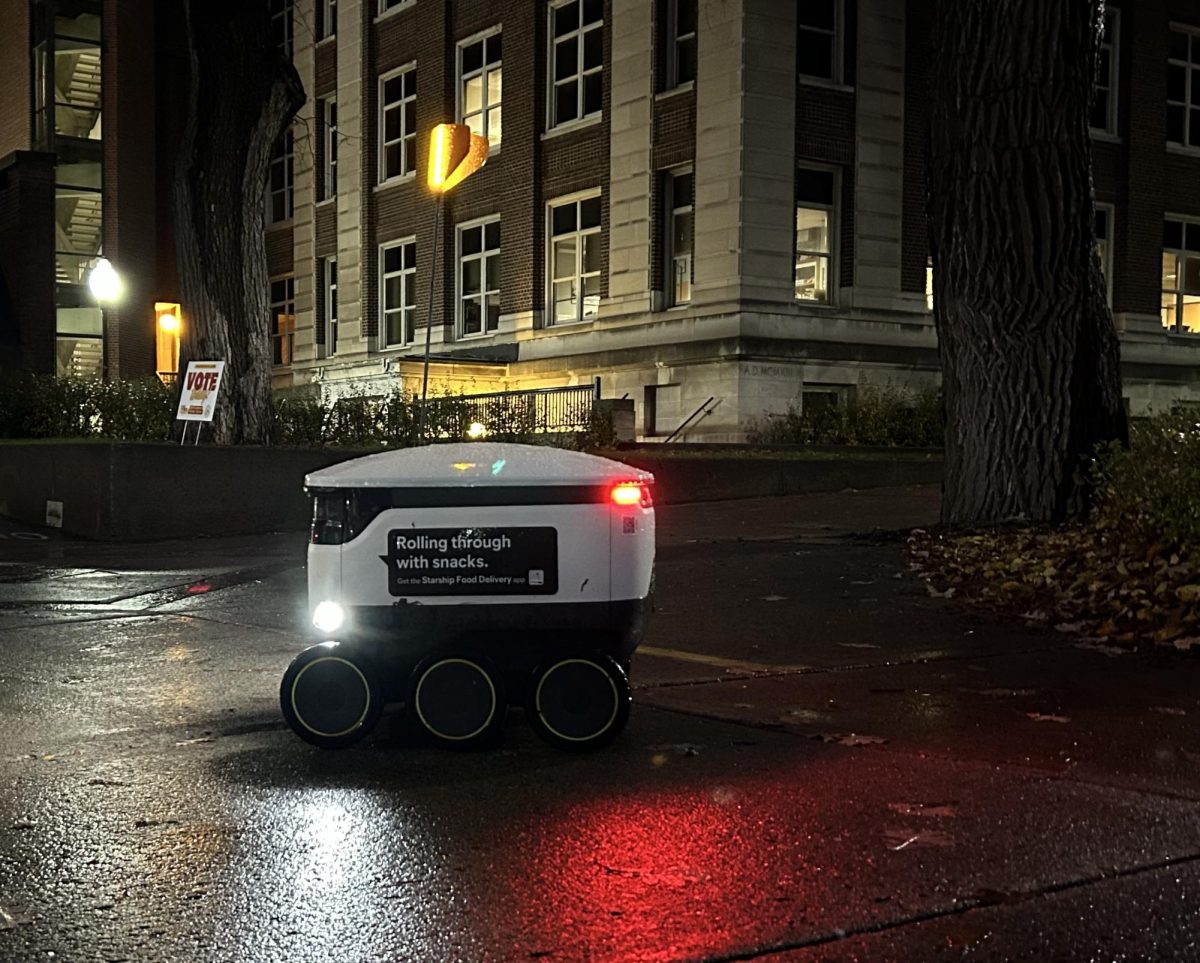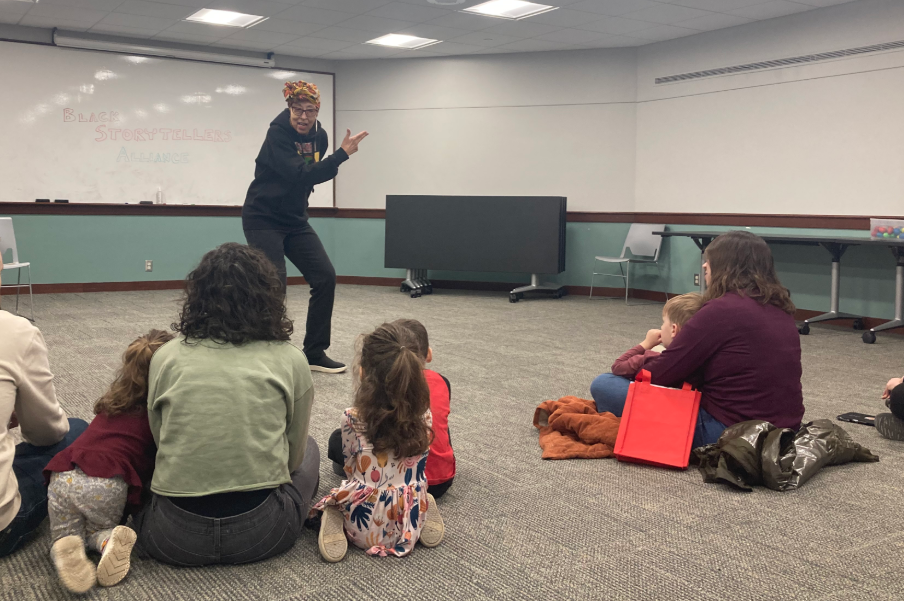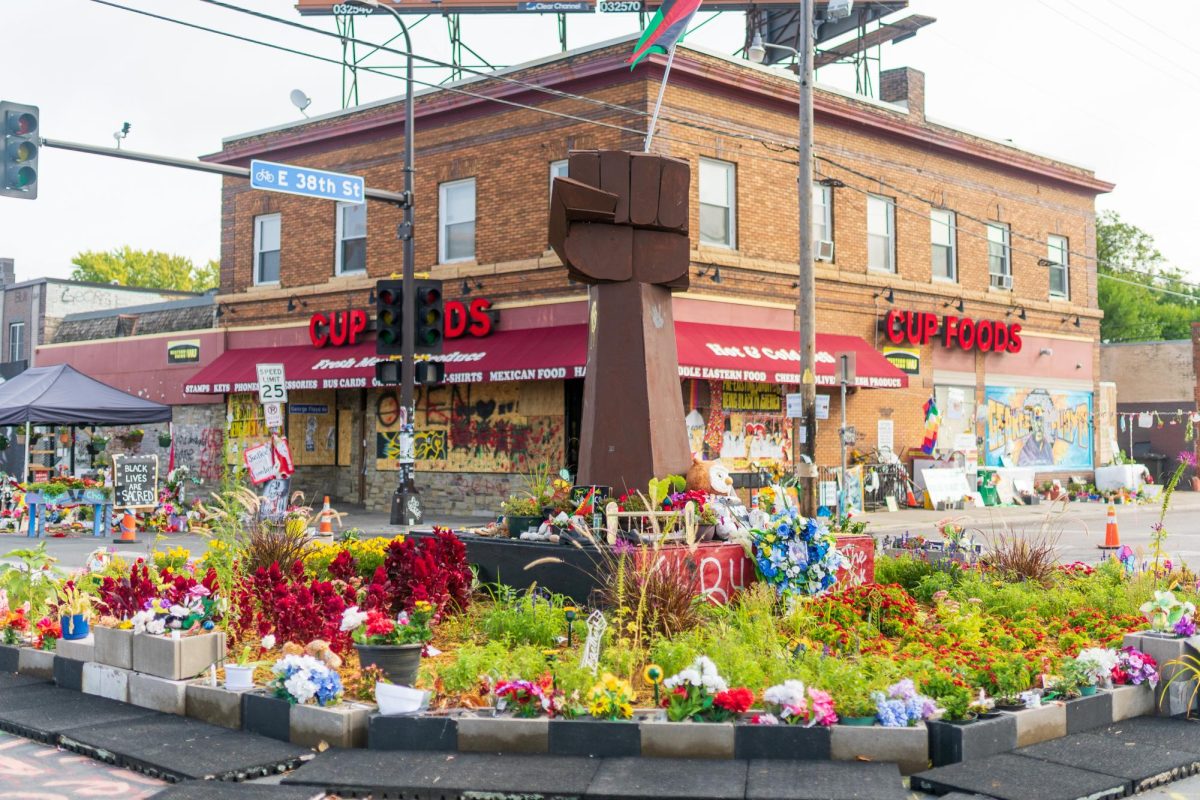Protestors from East Phillips disrupted Minneapolis City Council proceedings in a rally on Sept. 22 to prevent the demolition of the neighborhood’s former Roof Depot building, with advocates sharing concerns over the environmental impacts the project would have on the community.
East Phillips Neighborhood Institute (EPNI) activists played drums and pleaded with council members at the meeting not to tear the building down. The EPNI has worked since 2014 to convert the space into an indoor urban farm for the community.
After adjourning the meeting, the majority of council members left to wait in a nearby room, said Joe Vital, EPNI organizer and former East Phillips resident. Vital was one of EPNI’s protesters during the meeting and said only council members Elliot Payne, Robin Wonsley, Jason Chavez, Andrew Johnson and Jeremiah Ellison stayed behind to hear the community’s concerns.
“The other council members left,” Vital said. “You could hear laughter.”
After returning from a recess caused by the protest, the council voted 7-4 to approve a request for proposals regarding the demolition of the building. The council will need to approve a plan for the space before moving forward with demolition.
The city hopes to replace the Roof Depot building with a consolidated public works facility, which will store water treatment equipment and vehicles. However, arsenic trapped under the Roof Depot building combined with the risk of increased traffic pollution from the development has many East Phillips residents concerned over the environmental impacts of the city’s demolition.
“I can’t imagine, for residents to feel like they had no other choice but to … take up actions like that during a City Council meeting,” Wonsley said. “It further undercuts the credibility that we claim to have as being champions of our constituents.”
Wonsley, who voted against the request for proposals along with council members Payne, Aisha Chughtai and Chavez, said the vote puts one of Minneapolis’ most diverse communities at risk of further environmental harm. Chavez represents Ward 9, which is made up of East Phillips and its surrounding neighborhoods.
East Phillips’ polluted history
In 1938, a pesticide manufacturing plant in East Phillips’ industrial corridor along Hiawatha began producing and storing arsenic-based pesticides. For the next 25 years, until the site’s closure in 1963, the plant produced, shipped and stored arsenic. The building has had several uses since the plant’s closure, including a Sears warehouse.
State health officials found high levels of arsenic in soil and groundwater near the site in 1994 during a Hiawatha construction project, according to the Environmental Protection Agency (EPA). The Minnesota Department of Agriculture soon after concluded the plant as the cause of the contamination, and a year-long cleanup effort began in 2004 after conducting three environmental consultations.
In 2007, the EPA added the former plant site to its National Priorities List and continued cleanup efforts. By 2011, officials removed 50,000 tons of contaminated soil from over 600 contaminated properties in the neighborhood.
Despite the cleanup efforts, the extent of pollution and exposure risk remained uncertain. According to a report from the U.S. Department of Health and Human Services, the “ubiquitous presence of arsenic in the environment” limited officials’ ability to fully resolve the problem.
Minneapolis designated East Phillips part of the Southside Green Zone in 2018. City Green Zones work to improve air quality and livability, promote equity and clean up contamination.
Battle for the Roof Depot site
Minneapolis began developing plans for the Roof Depot site in 2001 before formally purchasing the property in 2016, according to a report published by the city. An overview of the project lists job opportunities for more sustainable designs such as storm water retention as benefits of the project.
In contrast, EPNI’s latest proposal includes plans to make the space into an organic farm, a cafe, a bicycle repair shop and a market.
EPNI has envisioned an indoor urban farm for the space for almost a decade, Vital said. After continuously pushing back on city plans and proposing their own, Vital said some people in the East Phillips neighborhood are starting to give up.
“After an eight-year fight and the community saying ‘no,’ and the government again ignores that to go through with a giant truck stop,” Vital said. “It’s demoralizing.”
Environmental racism
“The city’s plan is a death sentence, and they know it,” Cassandra Holmes, a life-long East Phillips resident who helped establish EPNI, said.
Holmes lost her son in 2013 after he was hospitalized in need of a heart transplant. After his death, Holmes said she began noticing how many young people in her community were suffering health conditions they weren’t born with due to the neighborhood’s poor environmental conditions.
“Our kids are important,” Holmes said. “Feeding and housing them are important things, but we also need our children to still live and have a chance to live … our lifespan is already shortened compared to others.”
About 70% of East Phillips residents are Black people, Indigenous people and people of color (BIPOC), almost double the percentage of Minneapolis as a whole, according to a 2021 City Council analysis.
Areas near the Roof Depot site in East Phillips experience asthma across all ages more than twice as often than the rest of Minnesota, the analysis said. The same areas are also in the highest 10% of air pollution measured in the state.
In the East Phillips neighborhood just north of the Roof Depot site, fine particles from air pollution contributed to deaths of adults 25 and over at a 37% higher rate than seen on average in the metro, according to the Minnesota Department of Health. In 2015, fine particles were linked to roughly 19 deaths in the East Phillips neighborhood for the same age group.
The city’s plans specifically target BIPOC residents, Holmes said. According to Holmes, pollution-caused health conditions are expensive to treat and keep children out of school in East Phillips, which affects things like education, public safety and economic status for the neighborhood’s residents.
“We know it’s going to continue until we can put something [at the Roof Depot site] that will be good for the community and help remediate the area that’s still contaminated,” Holmes said.














